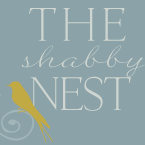I am most definitely an amateur photographer. However, that doesn't mean that I don't aspire to take better photographs! I invested in a new camera at Christmas, upgrading from a decidedly point-and-shoot digital camera (albeit a nice Canon one) to a fancy (albeit entry level) Canon EOS T3i Rebel DSLR (see link at bottom)! And I love it. Even with my limited forays into its many settings I have been able to take pictures of much better quality than I have ever achieved before. In fact, I am planning to go on a photography course soon so that I can better understand my camera and the processes involved in taking great photos.
One of the things I have been particularly keen to get better at is taking professional looking close up photos. As a blogger describing crafts and cooking (amongst other ramblings) I really wanted to be able to take close ups that my readers would love... from an aesthetic point of view but also from a practical!
Looking at other blogs and websites (like Etsy and Ebay) for inspiration, the things I think that makes a great close up professional image are having a blank (not necessarily white) background that does not distract from the object, no obvious shadows/glare/reflections and colours that appear vibrant and true to life. While the first is quite easily achieved simply by placing the object being photographed on a blank 'canvas', lighting the object well enough without creating shadows/glare/leaching of colour is really hard with a standard camera flash and/or lightbulb.
You can buy professional lightboxes or light tents
You will need...
- A large-ish, sturdy cardboard box
- Sharp scissors and/or a craft knife
- A ruler
- A marker
- Sticky tape
- White trash bags (or you could use white muslin fabric, white kitchen paper or similar)
- A large sheet of pure white Bristol board
- Sheets of other coloured card
- 3 lamps (the brighter the better)
Using a ruler, mark a line about 1-2 inches from the edge one of the sides of the box (I used the width of the ruler for ease).
Using a sharp craft knife or scissors, cut out this rectangle.
Repeat on 2 other sides of the box. Tip the box onto the intact side with the top open (you may have to trim the flaps of the open top. Keep the base of the box taped shut.
Cut a section of your white trash bags (or muslin fabric) to fit the hole you cut in the box and tape in place. Repeat for the other 2 sides.
Trim a large sheet of Bristol board (this type of paper is completely matte and uncoated) to the width of the base of the box. Then gently bend it to lay in a curve down the back wall and across the base of the box. This creates the appearance of an infinite background.























